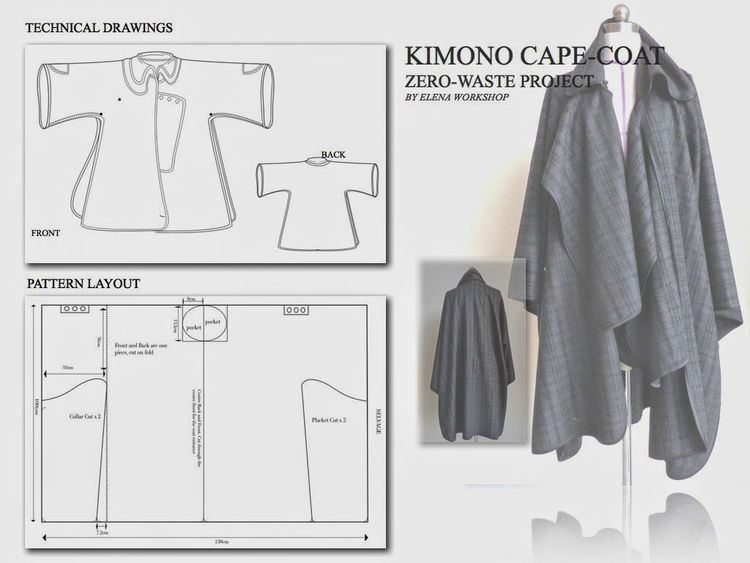 | ||
Similar Claire McCardell, Zandra Rhodes, Bernard Rudofsky | ||
Zero-waste fashion refers to items of clothing that generate little or no textile waste in their production. It can be considered to be a part of the broader Sustainable fashion movement. It can be divided into two general approaches. Pre-consumer zero-waste fashion eliminates waste during manufacture. Post-consumer zero-waste fashion generates clothing from post-consumer garments such as second-hand clothing, eliminating waste at what would normally be the end of the product use life of a garment. Zero-waste fashion is not a new concept - early examples of zero-waste or near zero-waste garments include Kimono, Sari, Chiton and many other traditional folk costumes.
Contents
Pre-consumer zero-waste design
Two general approaches fall under this category, both of which occur during a garment's initial production. In zero-waste fashion design the designer creates a garment through the pattern cutting process, working within the space of the fabric width. This approach directly influences the design of the final garment as the pattern cutting process is a primary design step. It is difficult to design a zero-waste garment solely through sketching, although sketching can be a useful speculative tool. Zero-waste manufacture, of which zero-waste design is a component, is a holistic approach that can eliminate textile waste without modifying the garment patterns.
Zero-waste pattern designers
Designers that have used this approach, or approaches to cutting that have an affinity with zero-waste fashion design, include
Ernesto ThayahtShreya UpadhyayaBernard RudofskyClaire McCardellZandra RhodesSiddhartha UpadhyayaYeohlee TengYingxian XiaoJulian RobertsTimo RissanenHolly McQuillanTara St JamesJennifer WhittySamuel FormoMark LiuDavid TelferJulia LumsdenMaterialByProductKatherine SoucieDusanka DuricDaniel SilversteinCharlene O'BrienBaiba LadigaNatascha von HirschhausenZero-waste manufacture
Approaches can include the use of technology such as whole garment knitting and the relatively new DPOL a patent by designer Siddhartha Upadhyaya, but often waste is eliminated by reusing the off-cuts in other products. Designers and companies that have used these approaches include:
Alabama ChaninAugust (DPOL) by Siddhartha UpadhyayaIssey MiyakePretcastle by Shreya Upadhyaya & Siddhartha UpadhyayaSans SoucieWorn AgainDaRoussoTonle
[Charlene O'Brien]Differences from standard fashion production
A standard garment production process may begin with a drawing of the desired garment, a pattern is then generated to achieve this design, a marker is made to most efficiently use the fabric (without modifying the pattern shapes), the pattern pieces are then cut from the cloth, sewn, packed and distributed to retailers. Standard garment production generates and average of 15% textile waste due to the stratification or hierarchy of the garment production process.
Post-consumer zero-waste
This design approach utilises the remnants of the fashion cycle to produce new garments from second hand or surplus goods. Practitioners include:
Martin MargielaGoodonePretcastleNick CaveSans SoucieWorn AgainRhetorical FactoryWaste elimination hierarchy
The waste hierarchy consists of the three 'R's' - Reduce, Reuse, Recycle, in order of impact. Zero-waste fashion design eliminates pre-consumer textile waste, while not necessarily addressing waste created during the use life and disposal phase of the garment's life cycle.
